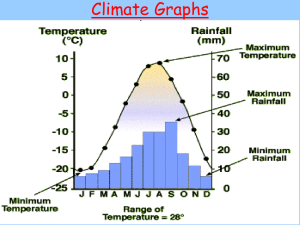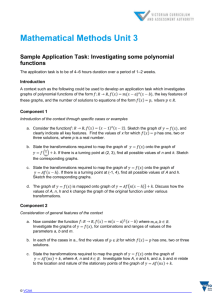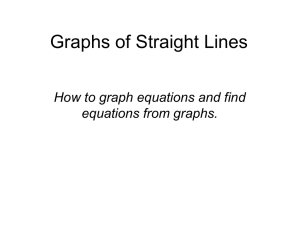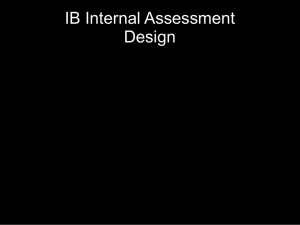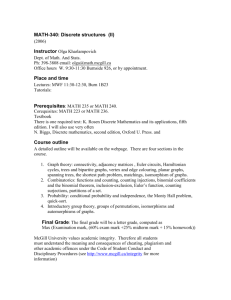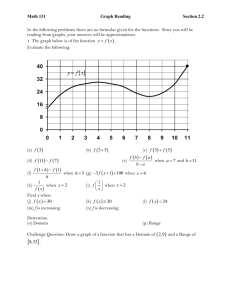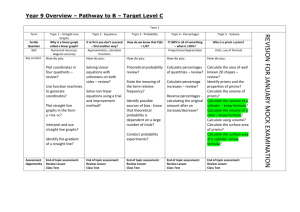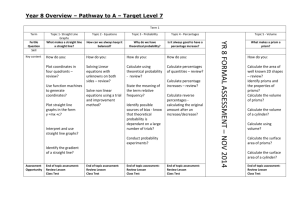Lesson 3.1.4 How should I graph?
advertisement
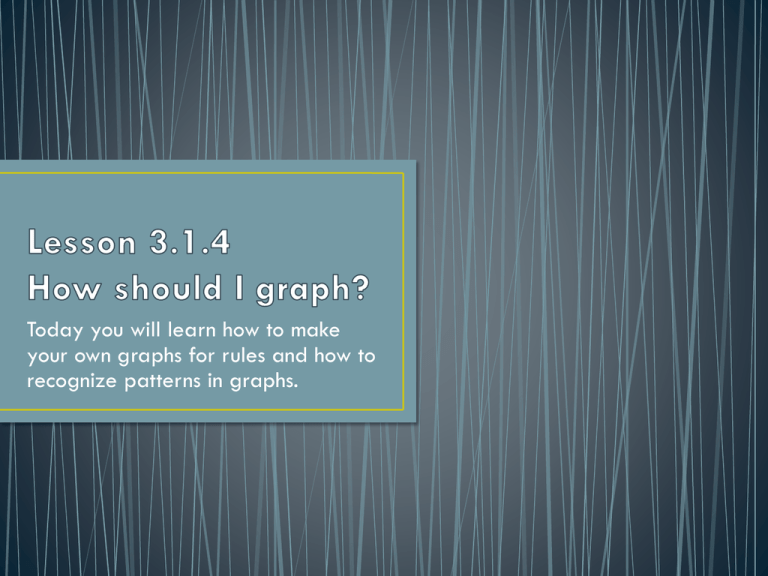
Today you will learn how to make your own graphs for rules and how to recognize patterns in graphs. a) Make a table like each one below and use the rules provided to complete them. y = 2x + 1 In (x) -4 -3 -2 -1 0 1 2 3 4 -3 -2 -1 0 1 2 3 4 Out (y) y =-3x + 1 In (x) Out (y) -4 b) Examine the numbers in the tables. What are the greatest x- and y-values? What are the smallest x- and y-values? Use this information to set up a coordinate plane on your graph paper. c) Plot and connect each set of points on the graph. Label each line with its rule. What do the graphs look like? How are the graphs similar? How are they different? a) In (x) -4 -3 -2 -1 0 1 2 3 4 Out (y) b) Examine the x and y values and create an appropriately scaled set of axes. Plot and connect the points on the graph and label it with your rule. c) This graph is an example of a PARABOLA! Today you will graph a rule by first making a table and then plotting the points on a graph. a) Plot and connect the points in the table below. In (x) -2 4 1 6 -5 0 Out (y) -6 -2 -3 2 -9 -4 b) Identify the point that does not appear to fit the pattern. c) Correct the point from part (b) so that it fits the pattern. d) Does the point (10, 8) lie on this graph? How can you tell? Today you will continue to study graphs by deciding what needs to go into a graph to make it complete. **Take note from previously made tables and graphs… a) y = -x + 1 b) y = 0.5x + 2 c) y = x² - 4 a) How are they different? Be as specific as you can. b) Label the (x, y) coordinates on each of your graphs for the point where each graph crosses the y-axis. These points are called the y-intercepts. c) Label the (x, y) coordinates on each of your graphs for the points where each graph crosses the x-axis. These points are called x-intercepts. • What are the qualities of a “complete graph”? • What of these elements to you sometimes forget or overlook?



